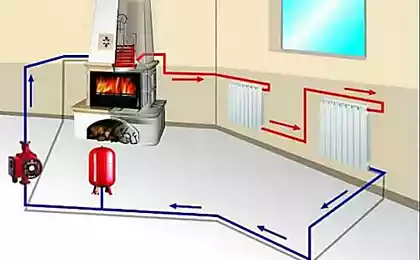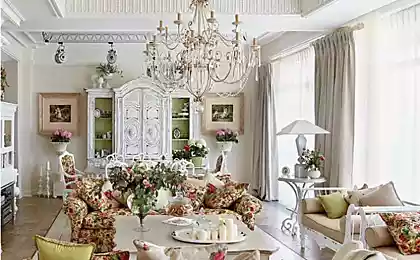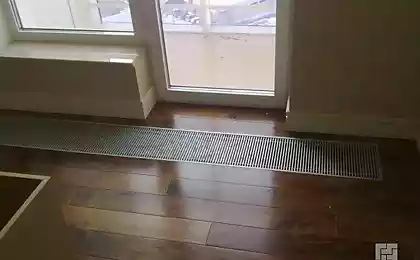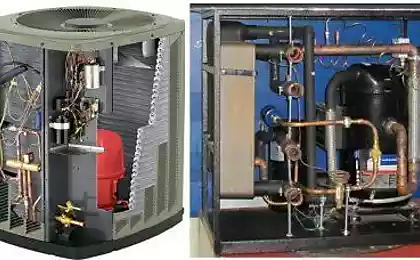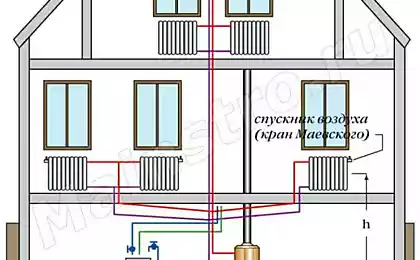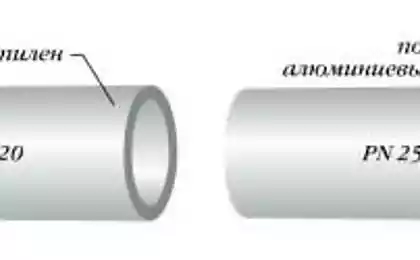175
What are the advantages of “Leningrad” and why old-school plumbers adore this heating system
Now, at the beginning of winter, the issue of heating is very acute. Both financial and practical. What subtleties you need to know the average person, which batteries to choose, how much it will cost. The issue is complicated by the fact that each region has its own tariff. But one thing we are absolutely sure of: heating. Leningrad I'm sure it won't.

If you do not live in the “news”, look closely, perhaps you have such a system. It has its pros and cons, however, in most regions of the post-Soviet space, Leningradka remains the most popular solution. Let’s try to figure out whether it makes sense to install it in our time.
For the first time such systems began to be installed in the second half of the last century. Like many things of that time, Leningradka was distinguished by its simplicity and reliability. Cons were also present, but for mass construction the idea was more than suitable. The premises were heated well, without unnecessary expenses.

In fact, the system is a closed circuit of one pipe. Hot water passes along the perimeter of a particular room or apartment, house. First advantage: low-materiality. Only one pipe is used, one bottling. There is no need to lay another pipe to drain cold water.
Well, this system is also very reliable. It's because of its simplicity. As long as there is at least minimal pressure between the beginning and end of the pipe, the water will flow as intended. Of course, checks of operation are needed. But they can be produced much less frequently compared to other systems.

There is also a shortage in Leningrad. It's temperature irregularity heating. The closer the radiator is to the heat source (water input), the higher the temperature. Accordingly, if the pipe ring is large enough, the radiators, standing last in line, will not give too much heat.
For private homes, Leningradka is best made energy independent. That is, working from natural circulation hot water. This is a very extensive question, but any professional installer just has to cope with it.

piabay The ideal example of cutting a radiator into a network is parallel connection, in which the bottling does not break, and at the entrance and exit there are cut-off cranes. In the case of diagonal connection, on each radiator you need to install the Maevsky crane. The weak side of this connection is stagnation Sludge in the lower left corner. It should be cleaned from time to time.

Piabay Leningradka can be installed on a two-storey house. Breeding for this case is standard, the minuses are the same. At the beginning of the pipe, the temperature of the radiators will be high, and at the end of the chain may be insufficient.
If customers have a house plan and they do not mind that some rooms remain cool, (for example, a storage room), this method may be suitable. In other cases, it is better to make Leningradka for each floor. Material may have to spend more, but no problems with heating are expected.

That’s all we wanted to tell you today about a heating system like Leningradka. It is quite simple to install, differs in economy and reliability. The disadvantage is only in the distribution of heat to some of the units. If you are currently undergoing repairs, we advise you to think about such an installation. By the way, the interior will only benefit from it!

If you do not live in the “news”, look closely, perhaps you have such a system. It has its pros and cons, however, in most regions of the post-Soviet space, Leningradka remains the most popular solution. Let’s try to figure out whether it makes sense to install it in our time.
For the first time such systems began to be installed in the second half of the last century. Like many things of that time, Leningradka was distinguished by its simplicity and reliability. Cons were also present, but for mass construction the idea was more than suitable. The premises were heated well, without unnecessary expenses.

In fact, the system is a closed circuit of one pipe. Hot water passes along the perimeter of a particular room or apartment, house. First advantage: low-materiality. Only one pipe is used, one bottling. There is no need to lay another pipe to drain cold water.
Well, this system is also very reliable. It's because of its simplicity. As long as there is at least minimal pressure between the beginning and end of the pipe, the water will flow as intended. Of course, checks of operation are needed. But they can be produced much less frequently compared to other systems.

There is also a shortage in Leningrad. It's temperature irregularity heating. The closer the radiator is to the heat source (water input), the higher the temperature. Accordingly, if the pipe ring is large enough, the radiators, standing last in line, will not give too much heat.
For private homes, Leningradka is best made energy independent. That is, working from natural circulation hot water. This is a very extensive question, but any professional installer just has to cope with it.

piabay The ideal example of cutting a radiator into a network is parallel connection, in which the bottling does not break, and at the entrance and exit there are cut-off cranes. In the case of diagonal connection, on each radiator you need to install the Maevsky crane. The weak side of this connection is stagnation Sludge in the lower left corner. It should be cleaned from time to time.

Piabay Leningradka can be installed on a two-storey house. Breeding for this case is standard, the minuses are the same. At the beginning of the pipe, the temperature of the radiators will be high, and at the end of the chain may be insufficient.
If customers have a house plan and they do not mind that some rooms remain cool, (for example, a storage room), this method may be suitable. In other cases, it is better to make Leningradka for each floor. Material may have to spend more, but no problems with heating are expected.

That’s all we wanted to tell you today about a heating system like Leningradka. It is quite simple to install, differs in economy and reliability. The disadvantage is only in the distribution of heat to some of the units. If you are currently undergoing repairs, we advise you to think about such an installation. By the way, the interior will only benefit from it!
An old chef shared the wisdom of how much to fry a turkey steak to turn out a restaurant dish
My uncle serves in Petropavlovsk-Kamchatsky and regularly gives us Kamchatka crabs, I had to learn how to cook them.







